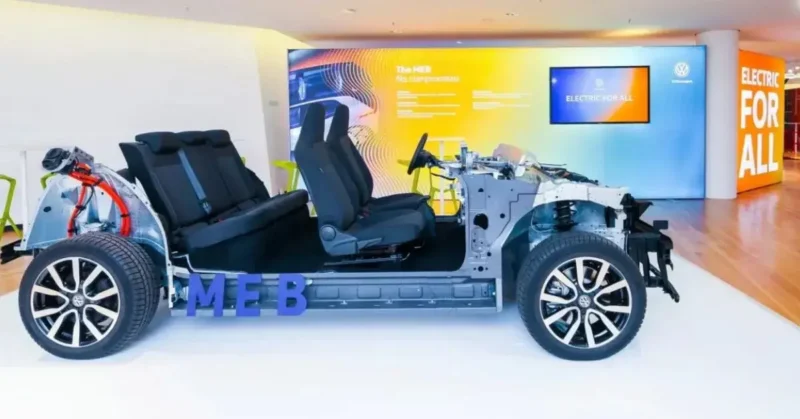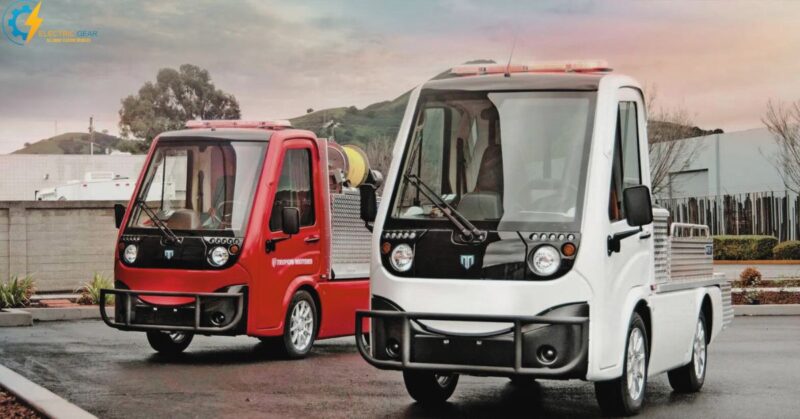Electric vehicles (EVs) rely heavily on keeping their batteries at a constant temperature because a battery cooling system is essential.
Keeping a lithium-ion battery from overheating is essential for maintaining its useful life and maximizing its performance and EV range, as heat is produced by the battery throughout the charging and discharging processes. Better battery cooling systems enable quicker charging, longer range, and higher efficiency, making them crucial for high-performance EVs.
Gas-powered engines generate so much heat that if not cooled properly, they can vanish in just a few minutes. Electric vehicles need not be cooled like a gasoline engine; however, EV batteries produce a certain amount of heat and must be cool for optimum efficiency, performance, and strength.
Important Takeaways
-
- Overheating of EV batteries quickens the pace of degradation of batteries.
-
- Lithium-ion is the type of battery mostly used in modern EVs.
-
- Liquid or air cooling system in EVs regulates the temperature of battery packs in EVs.
Why do EVs use Battery Cooling Systems?
EV’s entire system and drivetrain completely depend on its electric battery, and it’s mandatory to maintain a battery cooling system to keep safe operating temperatures during its lifetime and particularly during charging. If the adequate battery temperature is not supported, electric vehicles’ range and performance will be adversely affected, and some security concerns are also attached to high battery temperatures.
Battery Cooling System Electric Vehicle
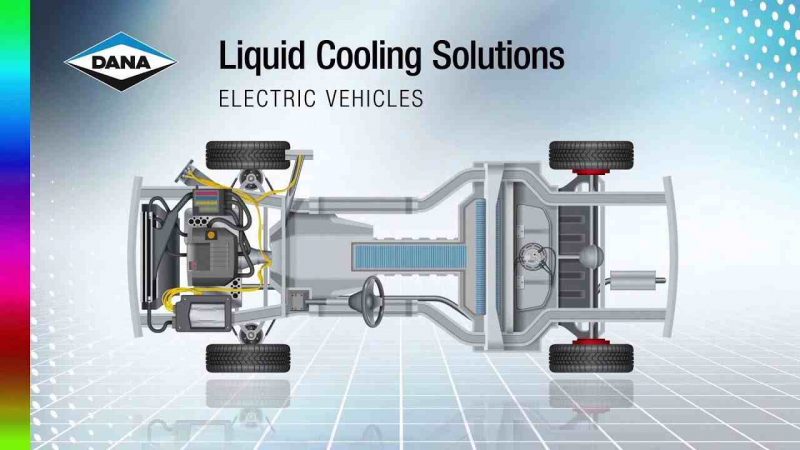
The most efficient technique of a battery cooling system is a liquid cooling loop, particularly designed to dissipate heat from the battery packs into the air. The cooling system’s heavyweight affects the EV range as it has to work more to neutralize the payoff load. It also leaves less room for other systems and materials.
Gasoline-powered vehicles, unlike EVs, use different methods to cool their engine, such as radiating their heat and using fresh air from the front grille. EVs, in contrast, don’t have engines; they don’t need a cooling system, like gas-powered engines, for their batteries; their preferred temperature should be somewhere in the range of 15-25 °C.
Temperatures outside this range may considerably reduce the EV range, and it can drop up to 20% in some cases when freezing points are reached. If the battery gets too hot, it will lessen the power, and in severe cases, it will degrade, fail, and be prone to catching fire.
Related article:
Electric Car Battery Life Span: Does It Last More Than EV
Battery Cooling Methods
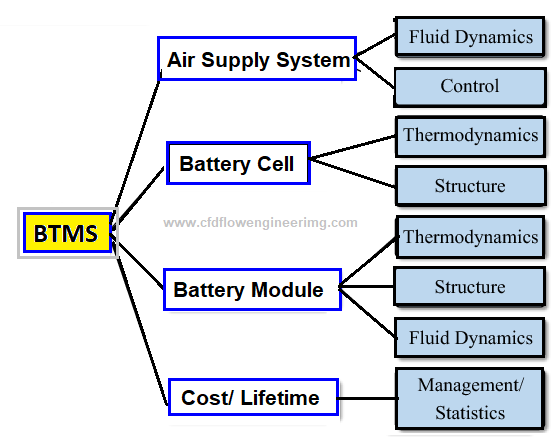
Thermal management is one of the best ways to keep battery temperature ideal. Battery naturally generates heat, particularly when going for fast charging. Air cooling is inexpensive, whereas the liquid cooling system is complex but performs very effectively. Current flow — while charging and discharging, the EV battery produces heat; the higher the current flow, the more heat will be produced.
Liquid battery cooling system:
Using a pipe in the liquid battery cooling system is the most effective way of thermal management because it’s better for receiving heat from battery packs. When the liquid comes into contact with the heating elements, it absorbs the inside heat and dissipates it into the air. One of its drawbacks is that its supply inside an EV is limited as against the air that’s unlimited amount can come through the battery to cool it.
Tesla’s liquid cooling system for batteries uses a coolant named glycol that transfers heat through a refrigeration cycle. Glycol is distributed through the cells of the battery pack, and cooling the 7,000 cells of battery packs looks like a challenging task.
The Tesla Model S cooling system includes a cooling pipe of patented serpentine passing through the battery pack and carrying a glycol coolant.
Battery liquid cooling system works almost the same as in a gas-only powered engine. The coolant is pumped throughout the passages of the battery, and it travels inside an EV battery cooling plate or directly circulates through the battery cells.
The liquid cooling system is also responsible for cooling the EV battery when plug-in on a DC fast charger. All types of charging produce heat but charging by a Level 3 charger produces a lot of heat inside a battery. The vehicle’s internal system monitors the heat produced during charging. If the system overheats, the vehicle reduces the charging speed so that the battery temperature can be lowered to a certain level.
REQUIREMENTS FOR LIQUID COOLANTS
Here are the requirements for liquid coolants in electric vehicles, explained simply:
-
- Good Heat Transfer: Liquid coolants should be able to absorb and transfer heat efficiently from the battery.
-
- Smooth Flow: They need to flow smoothly through the cooling system without causing blockages.
-
- Chemical Stability: Coolants should stay stable under high temperatures and not corrode the cooling system.
-
- Safe for Materials: They must not damage the materials in the cooling system.
-
- Safe for People and Environment: Coolants should be non-toxic and eco-friendly.
-
- Protection from Freezing: In cold climates, they should prevent freezing to protect the system.
-
- High Boiling Point: They should have a high boiling point to handle the battery’s heat.
-
- Compatible with Battery: Coolants must work well with the type of battery in the vehicle.
Meeting these requirements helps keep the battery cool, protects the system, and ensures the vehicle runs smoothly.
Direct liquid cooling (Immersion)
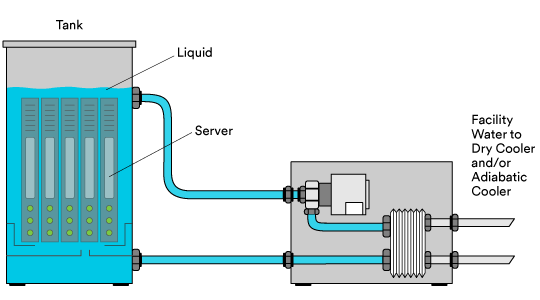
-
- It is also known as immersion and is usually used in heavy-duty and high-performance electronic devices.
-
- Its function is to cover the cell’s surface uniformly and cool it.
-
- After detecting cold or hot places of the cells, immersion removes them and improves the performance.
-
- Dielectric coolant must be used with less viscosity and high thermal conductivity.
-
- Due to its safety concerns and cost, it’s not suited for EVs.
-
- The fluid used in immersion has a boiling point of 60 to 80 °C, and special containers are used where cells can be submerged. Immersion only suits batteries of ultra-high performance and racing EVs.
Indirect liquid cooling
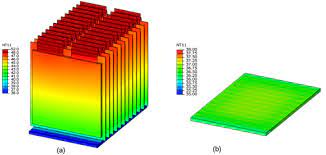
-
- Water is an effective cooling agent, but the potential for short-circuit is the primary issue in direct cooling battery methods.
-
- To avoid the short-circuit issue, the indirect method is used to prevent the electrical conduction of cells while keeping thermal diffusion intact.
-
- Electrical resistance can slow thermal diffusion, but it has fewer effects on cooling.
-
- Some EVs, like Tesla and General Motors, use indirect cooling methods. Some EV batteries use cold/cooling plates like General Motors. These plates are designed with multiple micro pockets for removing heat from batteries.
-
- Some EVs, like Tesla, use small tube-like structures between cylindrical cells of the battery. The heat-conductive and electrically insulated matter is filled between the cooling ducts and battery cells.
-
- These tubes and wavy-like structures have small heat contact areas and, thus, are the less effective cooling agents. However, this method is safer from many viewpoints. All coolant connections are always kept outside of the enclosure to avoid coolant leakage.
Passive Liquid Cooling Systems
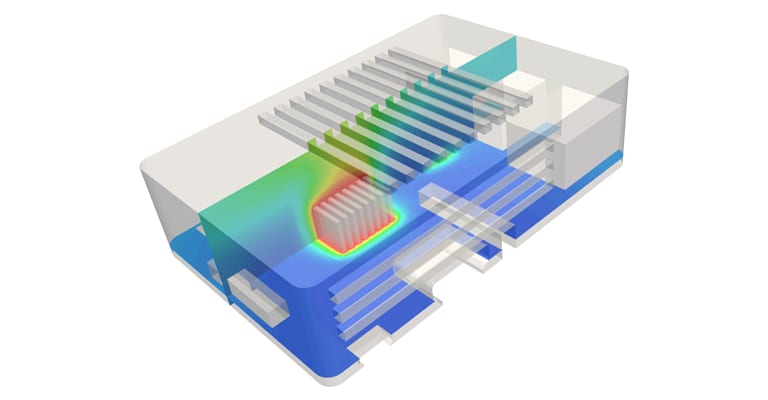
-
- The temperature difference between the surrounding air and the battery determines the cooling power in this cooling system. Attaching fans behind radiators can improve cooling efficiency.
Active Liquid Cooling Systems
It’s effective when the atmospheric temperature exceeds the EV battery’s temperature or the difference in temperature between both is too small. Two chains make up the active liquid cooling system. The primary cycle works the same way as a passive liquid-cooling system, and the additional loop comprises the air conditioning cycle. It shall consist of two heat exchangers that serve as evaporators and condensers.
Liquid Cooling Battery Pack in EVs
Electric vehicles with liquid cool battery packs:
-
- Ford Focus
-
- Audi e-Tron
-
- General Motors Chevrolet Bolt
-
- GM Chevrolet Volt
-
- Tesla X, S, and 3
-
- Volvo XC90 T8
-
- Toyota iQ
Advantages of liquid cooling of the battery
-
- It has a heat removal rate because its capacity and heat density are high, unlike the air.
-
- Air cooling requires an additional fan to push the air into the air pockets around battery packs which requires extra energy.
-
- Compared to an air-cool system, the liquid cooling technique is believed to be more compact in producing desired results.
-
- Air pollution produces noise which is seldom found in the cool liquid system. However, the potential danger of fluid leakage is present, and once occurred hard to find and repair.
Chevrolet Cooling System
-
- This method uses many micro-channels fixed to metal plates to carry out the coolant.
-
- The plate is adjusted between battery sets to dissipate heat.
Air EV Battery Cooling System
-
- Easily available air is extensively used by most industries worldwide. Due to its lower thermal conductivity and low heat capacity, it’s not considered an effective coolant agent. So, it’s only sometimes advised by the manufacturers of most EVs.
-
- However, due to its lower maintenance and running cost, it is used in EVs like Nissan Leaf, Prius, and others.
-
- Cooling is done through forced or natural convection modes (active and passive cooling, respectively).
-
- Passive/natural cooling is feasible for low-density batteries, and blowers are used to increase the convection heat transfer rate.
-
- Air is used to cool the battery modules, and the temperature remains high at the rear and middle of the battery and remains high near the outlet of the battery pack. To effectively cool it, there is a need to increase airflow turbulence and flow rate.
How EVs are Cooled by Using Air
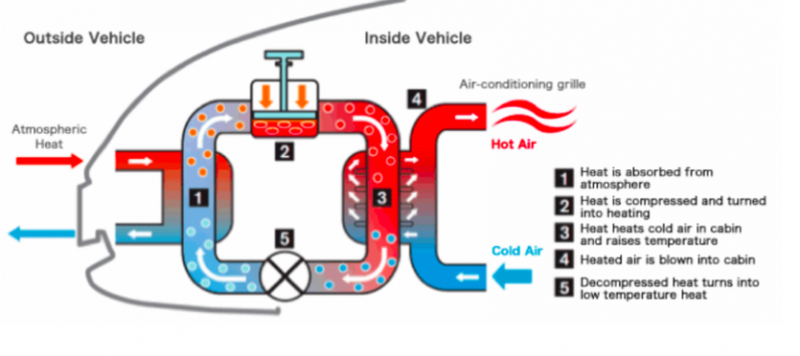
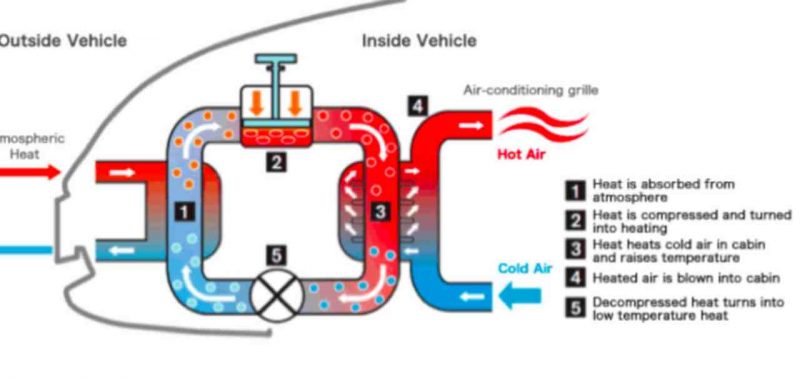
-
- Battery pack air cooling can be done by letting the air circulate through its cells. The process accelerates by adding a fan to speed up the airflow. However, in all cases, it remains a less effective way of cooling the battery packs.
-
- Some EVs use their AC unit to chill the air before sending it into the battery packs. Air cool system is simpler, less costly, and is known as a not more effective way of cooling. It’s almost obsolete in EVs but is used in Nissan Leaf.
-
- Fins cooling system is also used in some electric appliances; they add weight and are ineffective in EVs.
-
- Phase change material is also one of the methods for absorbing heat, but it too could be more efficient for EVs.
EVs with Air Cool Battery Packs
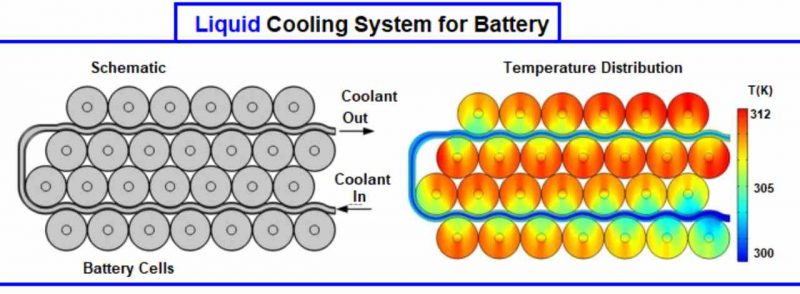
The following EVs are with air-cool battery packs.
-
- Honda Fit electric vehicle
-
- Honda Insight
-
- Hyundai Ioniq
-
- Nissan Leaf
-
- e-NV 200 Nissan
-
- EV Renault Zoe
-
- Toyota Prius
Battery Thermal Management System
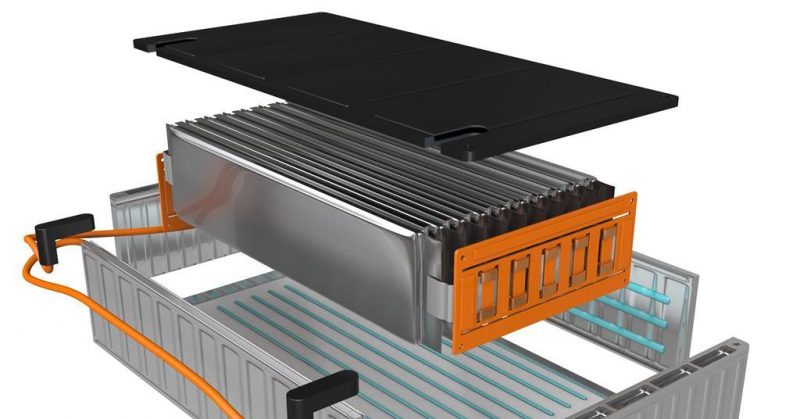
When things from thermal viewpoints are concerned, three primary aspects are considered if Lithium-ion batteries are used in EVs.
-
- Batteries lose their charge below 32°F (0°C) because chemical reactions slow down in the battery, resulting in loss of driving range, power, acceleration, and possible potential for battery damage.
-
- Battery performance deteriorates above 86°F, or 30 degrees Celsius resultantly, posing a danger to acceleration, response, and power density.
-
- The temperature range above 104°F and 40 degrees Celsius can be fatal. It can cause irreversible damage to the battery, and thermal runaway can occur at temperatures of 70 to 100 degrees Celsius. In this state of affairs, the battery can go to destruction.
To get optimum strength from a Lithium-ion EV battery, the temperature range of 15-25 °C— akin to that of the human body— should be maintained.
Several techniques are used in this effect to monitor and adjust the battery temperature. A Battery Thermal Management System is all-out important to prevent the battery temperatures from going extreme. It keeps the battery cells and components’ temperature within their operating range.
National Renewable Energy Laboratory statement
NREL, Department of US Energy, states that BTMS is primarily required for three reasons.
-
- It reduces the uneven distribution of temperature throughout cells.
-
- It is assigned to keep the battery pack temperature within the required limits for optimum working life and performance. The temperature should ideally be in the range of 15-35°C.
-
- It controls potential risks associated with temperature extremes, such as blasts and thermal runaways.
EVs have a battery management system (BMS) that provides information such as:
-
- Protection against temperature extremes
-
- Protection against voltage
-
- Protection against over-current
-
- Battery longevity
-
- Cell Balance
-
- It checks the State of charge (SoC), and State of Health (SoH)
-
- It maintains communication between all battery components.
-
- It acquires data and analyzes it.
Considering Parameters for Optimum Battery Performance
-
- Battery cooling system selection may include the following parameters.
-
- Battery’s operating condition
-
- Load on battery
-
- The rate of voltage and the current
-
- The environment in which the battery is performing
-
- Cells of the battery
-
- Battery cell chemistry like NiMH or Lithium-ion
-
- Cells are circular or rectangular
-
- Cell material characteristics
-
- Cells packing
-
- The thermal interface
-
- Cooling medium
-
- Cooling Mode: nature draft of forced convective cooling.
-
- Thermal interface and battery pack fitting.
Final Thoughts
Multiple techniques have been invented since the advent of electric vehicles for effectively cooling their batteries. Air cooling is the simplest but most effective. Liquid cooling, in contrast, is fast, but several risks are associated with it, including short circuits and others.
The key factors of the Battery Thermal Management System are temperature operating, battery pack safety, thermal interface, and cooling method. Contract for differences (CFD) pattern will aid in the design of the battery cooling system. The data may be used to create an Automated method for battery technology that improves cell life.
Frequently Asked Questions
Why EV Batteries Need to Be Cooled?
EV batteries need to be cooled to maintain optimal performance, prevent degradation, ensure safety, enable faster charging, and maintain consistent performance.
How long do EV batteries last?
EV battery lifespan varies depending on factors like usage, charging habits, and environmental conditions. Generally, modern EV batteries are designed to last for hundreds of thousands of miles or over a decade with proper care.
How do I maintain my EV battery?
To maintain EV battery health, it's essential to follow recommended charging practices, avoid frequent deep discharges, and keep the battery within its optimal temperature range. Regular software updates and maintenance checks can also help optimize battery performance.
Do EV batteries lose capacity over time?
Like all batteries, EV batteries degrade over time, resulting in a gradual loss of capacity. However, modern battery management systems help mitigate degradation, and most EV batteries retain a significant portion of their capacity even after years of use.
Can EV batteries catch fire?
While rare, EV battery fires can occur in extreme cases like severe crashes or manufacturing defects. However, stringent safety standards, robust battery management systems, and protective features help minimize the risk of battery fires in EVs.

Imran is an experienced content writer who crafts engaging and informative articles for a variety of industries. With a keen eye for detail and a passion for storytelling, Imran delivers high-quality content that resonates with readers. Whether he’s writing blog posts, social media content, or website copy, Imran is committed to delivering compelling content that drives results.



